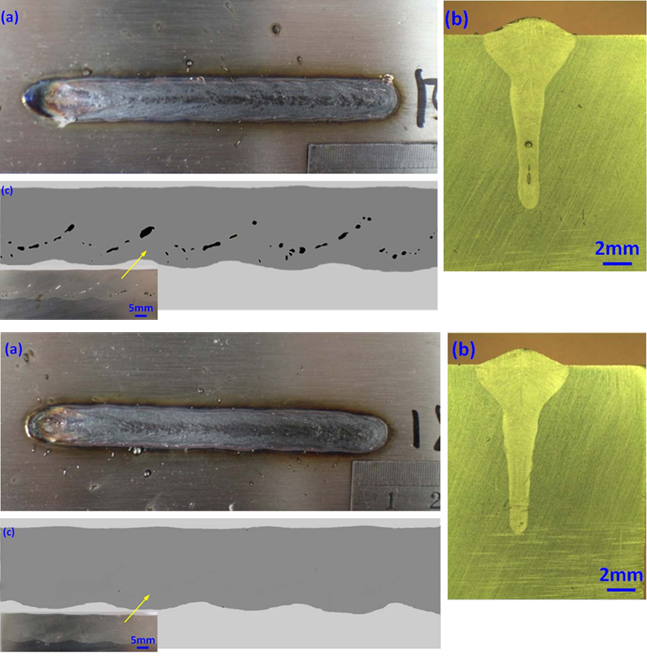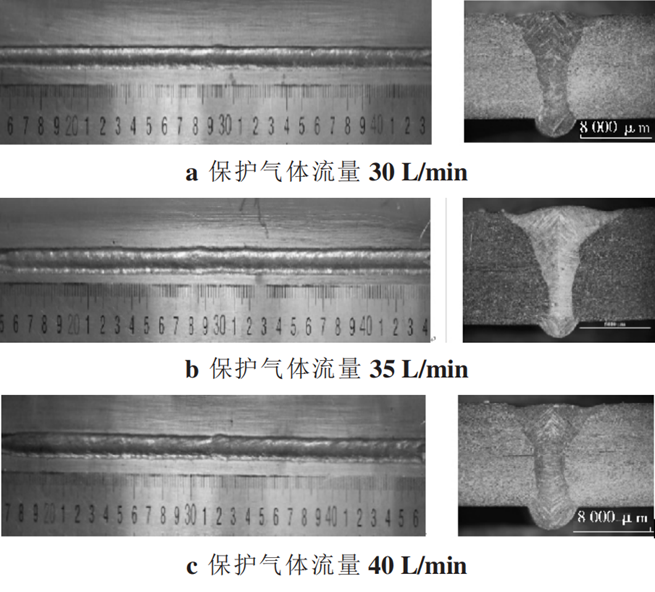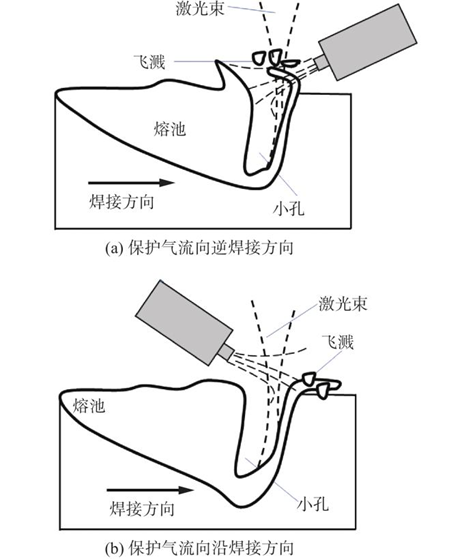Laser welding technology, due to its high energy density, low heat input and non-contact characteristics, has become one of the core processes in modern precision manufacturing. However, problems such as oxidation, porosity and element burn-off caused by the contact of the molten pool with the atmosphere during welding seriously restrict the mechanical properties and service life of the weld seam. As the core medium for controlling the welding environment, the selection of the type, flow rate and blowing mode of protective gas needs to be coupled with the material characteristics (such as chemical activity, thermal conductivity) and the thickness of the plate.
Types of shielding gases
The core function of shielding gases lies in isolating oxygen, regulating the behavior of the molten pool, and improving the efficiency of energy coupling. Based on their chemical properties, shielding gases can be classified into inert gases (argon, helium) and active gases (nitrogen, carbon dioxide). Inert gases have high chemical stability and can effectively prevent the oxidation of the molten pool, but their significant differences in thermal physical properties significantly affect the welding effect. For example, argon (Ar) has a high density (1.784 kg/m³) and can form a stable coating, but its low thermal conductivity (0.0177 W/m·K) leads to slow cooling of the molten pool and a shallow weld penetration. In contrast, helium (He) has an eightfold higher thermal conductivity (0.1513 W/m·K) than argon and can accelerate the cooling of the molten pool and increase the weld penetration, but its low density (0.1785 kg/m³) makes it prone to escape, requiring a higher flow rate to maintain the protective effect. Active gases such as nitrogen (N₂) can enhance the weld strength through solid solution strengthening in certain scenarios, but excessive use can cause porosity or the precipitation of brittle phases. For example, when welding duplex stainless steel, nitrogen diffusion into the molten pool may disrupt the ferrite/austenite phase balance, resulting in a decrease in corrosion resistance.
Figure 1. Laser welding of 304L stainless steel (top): Ar gas shielding; (bottom): N2 gas shielding
From the perspective of process mechanism, the high ionization energy of helium (24.6 eV) can suppress the plasma shielding effect and enhance laser energy absorption, thereby increasing the penetration depth. Meanwhile, the low ionization energy of argon (15.8 eV) is prone to generating plasma clouds, which requires defocusing or pulse modulation to reduce interference. Additionally, the chemical reaction between active gases and the molten pool (such as nitrogen reacting with Cr in steel) may alter the weld composition, and careful selection based on material properties is necessary.
Material application examples:
• Steel: In thin plate (<3 mm) welding, argon can ensure surface finish, with an oxide layer thickness of only 0.5 μm for a 1.5 mm low-carbon steel weld seam; for thick plates (>10 mm), a small amount of helium (He) needs to be added to increase the penetration depth.
• Stainless steel: Argon protection can prevent Cr element loss, with a Cr content of 18.2% in a 3 mm thick 304 stainless steel weld seam approaching the 18.5% of the base metal; for duplex stainless steel, an Ar-N₂ mixture (N₂ ≤ 5%) is needed to balance the ratio. Studies have shown that when using an Ar-2% N₂ mixture for 8 mm thick 2205 duplex stainless steel, the ferrite/austenite ratio is stable at 48:52, with a tensile strength of 780 MPa, which is superior to pure argon protection (720 MPa).
• Aluminum alloy: Thin plate (<3 mm): The high reflectivity of aluminum alloys leads to a low energy absorption rate, and helium, with its high ionization energy (24.6 eV), can stabilize the plasma. Research shows that when 2 mm thick 6061 aluminum alloy is protected by helium, the penetration depth reaches 1.8 mm, increasing by 25% compared to argon, and the porosity rate is lower than 1%. For thick plates (>5 mm): Aluminum alloy thick plates require high energy input, and a helium-argon mixture (He:Ar = 3:1) can balance both penetration depth and cost. For example, when welding 8 mm thick 5083 plates, the penetration depth reaches 6.2 mm under mixed gas protection, increasing by 35% compared to pure argon gas, and the welding cost is reduced by 20%.
Note: The original text contains some errors and inconsistencies. The translation provided is based on the corrected and coherent version of the text.
The influence of argon gas flow rate
The argon gas flow rate directly affects the gas coverage capability and the fluid dynamics of the molten pool. When the flow rate is insufficient, the gas layer cannot completely isolate the air, and the molten pool edge is prone to oxidation and the formation of gas pores; when the flow rate is too high, it may cause turbulence, which can wash the molten pool surface and lead to weld depression or spatter. According to the Reynolds number of fluid mechanics (Re = ρvD/μ), an increase in flow rate will increase the gas flow velocity. When Re > 2300, the laminar flow turns into turbulent flow, which will destroy the stability of the molten pool. Therefore, the determination of the critical flow rate needs to be analyzed through experiments or numerical simulations (such as CFD).
Figure 2. Effects of Different Gas Flow Rates on Weld Seam
Flow optimization should be adjusted in combination with material thermal conductivity and plate thickness:
• For steel and stainless steel: For thin steel plates (1-2 mm), the flow rate is preferably 10-15 L/min. For thick plates (>6 mm), it should be increased to 18-22 L/min to suppress tail oxidation. For example, when the flow rate of 6 mm thick 316L stainless steel is 20 L/min, the uniformity of HAZ hardness is improved by 30%.
• For aluminum alloy: High thermal conductivity requires a high flow rate to extend the protection time. For 3 mm thick 7075 aluminum alloy, the porosity rate is the lowest (0.3%) when the flow rate is 25-30 L/min. However, for ultra-thick plates (>10 mm), it is necessary to combine with composite blowing to avoid turbulence.
The influence of the blowing gas mode
The blowing gas mode directly affects the flow pattern of the molten pool and the defect suppression effect by controlling the direction and distribution of the gas flow. The blowing gas mode regulates the flow of the molten pool by changing the surface tension gradient and the Marangoni flow (Marangoni flow). Sideways blowing can induce the molten pool to flow in a specific direction, reducing pores and slag inclusion; composite blowing can improve the uniformity of weld formation by balancing the energy distribution through multi-directional gas flow.
The main methods of blowing include:
• Coaxial blowing: The gas flow is output coaxially with the laser beam, symmetrically covering the molten pool, suitable for high-speed welding. Its advantage is high process stability, but the gas flow may interfere with laser focusing. For example, when using coaxial blowing on automotive galvanized steel sheet (1.2 mm), the welding speed can be increased to 40 mm/s, and the spatter rate is less than 0.1.
• Sideways blowing: The gas flow is introduced from the side of the molten pool, which can be used to directionally remove plasma or bottom impurities, suitable for deep penetration welding. For example, when blowing on 12 mm thick Q345 steel at an angle of 30°, the weld penetration increases by 18%, and the bottom porosity rate decreases from 4% to 0.8%.
• Composite blowing: Combining coaxial and sideways blowing, it can simultaneously suppress oxidation and plasma interference. For example, for 3 mm thick 6061 aluminum alloy with a double nozzle design, the porosity rate is reduced from 2.5% to 0.4%, and the tensile strength reaches 95% of the base material.
The influence of shielding gas on welding quality fundamentally stems from its regulation of energy transfer, the thermodynamics of the molten pool, and chemical reactions:
1. Energy transfer: The high thermal conductivity of helium accelerates the cooling of the molten pool, reducing the width of the heat affected zone (HAZ); the low thermal conductivity of argon prolongs the existence time of the molten pool, which is beneficial for the surface formation of thin plates.
2. Molten pool stability: The gas flow affects the flow of the molten pool through shear force, and an appropriate flow rate can suppress spatter; excessive flow rate will cause vortex, leading to weld defects.
3. Chemical protection: Inert gases isolate oxygen and prevent the oxidation of alloy elements (such as Cr, Al); active gases (such as N₂) change the weld properties through solid solution strengthening or compound formation, but the concentration needs to be precisely controlled.
Post time: Apr-09-2025



















